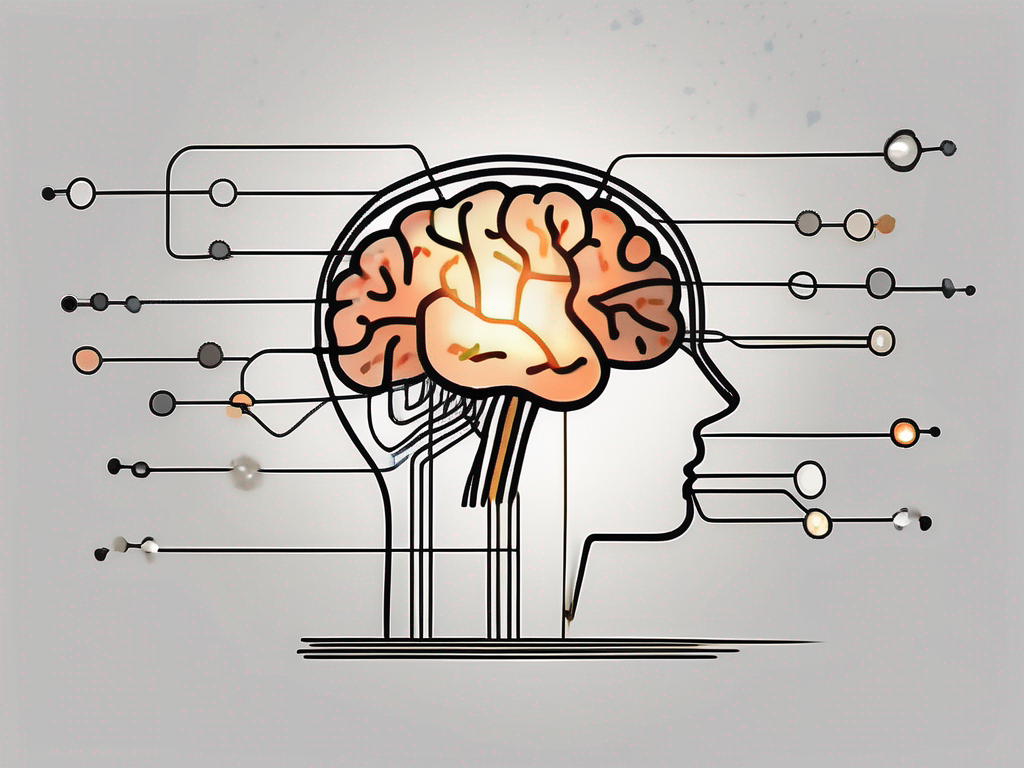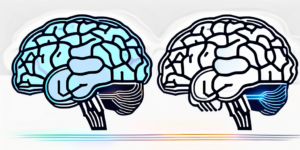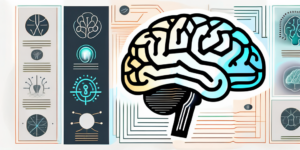The Power of Flow State: Unlocking Your Peak Performance

The Power of Flow State: Unlocking Your Peak Performance
Flow state is a remarkable mental state that has captivated researchers and individuals seeking peak performance for decades. When in a state of flow, people experience heightened focus, creativity, and productivity, leading to optimal performance in various activities. Understanding how to achieve and sustain flow state can be a game changer in unlocking your true potential. In this article, we will delve into the concept of flow state, explore its benefits, discuss strategies to enter this state, address common challenges, and provide tips to sustain it in your daily life.
Understanding the Concept of Flow State
Flow state, also known as “being in the zone,” is a state of complete absorption in an activity that leads to effortless concentration and enjoyment. Flow was popularized by psychologist Mihaly Csikszentmihalyi, who described it as a state characterized by intense focus, time distortion, and automatic action. To better understand flow state, let’s explore the science behind it and delve into the psychology that drives it.
The Science Behind Flow State
Neurologically, flow state is associated with the release of neurochemicals like dopamine, endorphins, and serotonin. These chemicals create a sense of euphoria and improve focus and motivation. Dopamine, in particular, plays a crucial role in the brain’s reward system, reinforcing the behavior that leads to flow state. When dopamine is released, it not only enhances concentration but also boosts feelings of pleasure and satisfaction.
Furthermore, flow state activates the prefrontal cortex, responsible for decision-making and creativity, while reducing activity in the amygdala, which processes fear and anxiety. This combination fosters a sense of calm and freedom from distractions, allowing for optimal performance. The prefrontal cortex, when fully engaged, enables individuals to think more creatively and make better decisions, while the reduced activity in the amygdala helps to alleviate any inhibitions or self-doubt that may hinder the flow state experience.
The Psychology of Flow State
Flow state is driven by several psychological factors. One key factor is the alignment of skills and challenges. Flow is most likely to occur when the difficulty of a task matches an individual’s skill level. When challenges are too high, anxiety arises, while boredom sets in when challenges are too low. It is in the delicate balance between skill and challenge that individuals find themselves fully immersed in the activity, pushing their limits and experiencing the flow state.
Another psychological component of flow state is complete immersion in the activity. When fully engaged, individuals experience a sense of timelessness and lose self-consciousness, leading to enhanced performance. This state of deep focus allows individuals to become one with the task at hand, blocking out any external distractions and entering a state of heightened awareness. In this state, individuals are able to tap into their full potential, effortlessly executing actions and achieving a level of performance that surpasses their usual capabilities.
The Benefits of Achieving Flow State
Attaining flow state offers numerous benefits that can significantly enhance your performance and overall well-being. Let’s explore the key advantages:

Enhanced Productivity and Performance
In flow state, your focus is at its peak, enabling optimal productivity and performance. Time seems to fly by as you effortlessly tackle tasks, leading to a higher output of quality work. Procrastination diminishes, and you become fully absorbed in the task at hand, driving you to achieve your best results.
Increased Creativity and Innovation
Creativity flourishes during flow state due to the relaxed, yet highly focused, state of mind. Ideas flow effortlessly, and innovative solutions come naturally. The absence of self-consciousness and fear of failure allows for thinking outside the box and exploring new possibilities.
But the benefits of achieving flow state extend beyond productivity and creativity. Let’s delve into a couple more advantages:
Improved Emotional Well-being
Flow state has a profound impact on your emotional well-being. When you are fully immersed in an activity that challenges your skills, you experience a sense of control and mastery. This feeling of competence boosts your self-esteem and confidence, leading to a greater overall sense of happiness and fulfillment. Additionally, being in flow state promotes the release of endorphins, which are natural mood enhancers, further enhancing your emotional well-being.
Heightened Learning and Skill Development
Flow state is an optimal state for learning and skill development. When you are completely absorbed in a task, your brain is fully engaged, making it more receptive to new information and better able to retain it. This heightened state of focus allows you to learn and acquire new skills more efficiently. Whether you are learning a new language, playing a musical instrument, or honing your athletic abilities, being in flow state accelerates your progress and helps you reach your goals faster.
As you can see, achieving flow state offers a multitude of benefits that go beyond just productivity and creativity. It has the power to positively impact your emotional well-being and accelerate your learning and skill development. So, next time you find yourself fully immersed in an activity, embrace the flow and reap the rewards it brings.
Recognizing Your Flow State
Identifying when you are in a flow state is crucial for harnessing its power. By recognizing the signs and triggers, you can intentionally enter the state and cultivate it more often. Let’s explore how to spot your flow state and discover the triggers that set it in motion.
Identifying Your Flow Triggers
Everyone has unique triggers that spark their flow state. These triggers can be environmental, such as a specific work environment or background music, or internal, such as a particular mindset or engaging in a specific activity. Becoming aware of these triggers allows you to recreate the conditions that lead to flow state, increasing your chances of achieving it.
Signs You’re in a Flow State
Flow state is characterized by various signs that indicate you are firmly in its grip. A common sign is effortless concentration, where you become fully absorbed in the task without feeling distracted or overwhelmed. Time seems to blur, and you may lose track of how much time has passed. Another sign is a deep sense of enjoyment and fulfillment. You may experience a heightened sense of satisfaction and pleasure as you perform the activity.
Furthermore, when you are in a flow state, your creativity and problem-solving abilities may reach new heights. The mind becomes a wellspring of innovative ideas, effortlessly connecting dots and finding solutions that may have eluded you before. This heightened state of mental clarity and ingenuity can lead to breakthroughs and exceptional performance.
Additionally, being in a flow state can have profound effects on your overall well-being. Research has shown that when in this state, the brain releases a cocktail of neurochemicals, including dopamine, endorphins, and serotonin, which are responsible for feelings of happiness, motivation, and well-being. This surge of positive neurochemicals can enhance your mood, increase your resilience to stress, and boost your overall mental and emotional well-being.
Strategies to Enter the Flow State
Entering the flow state requires intentional effort and the use of specific strategies. Let’s explore two fundamental strategies:
Unlocking Flow: The Promise of Non-Invasive Vagus Nerve Stimulation
The elusive “flow state” – characterized by effortless focus, deep immersion, heightened creativity, and peak performance – is often hindered by stress, anxiety, and cognitive noise. Non-invasive vagus nerve stimulation (nVNS) is emerging as a potential key to unlocking this optimal state by fundamentally calming the nervous system and optimizing brain function.
nVNS devices (typically applied to the ear or neck) deliver gentle electrical signals to the vagus nerve, the body’s primary parasympathetic pathway. This stimulation triggers a cascade of effects crucial for flow:
-
Quieting the Inner Critic & Stress Response: nVNS actively counters the fight-or-flight system. By boosting parasympathetic (rest-and-digest) tone, it rapidly reduces cortisol and dampens amygdala hyperactivity – the brain’s fear center. This quiets distracting anxiety, self-doubt, and background stress, creating the mental stillness necessary for deep concentration.
-
Enhancing Focus and Cognitive Control: Stimulating the vagus nerve influences key neurotransmitter systems. It promotes the release of norepinephrine in optimal amounts, sharpening alertness and attention. It also modulates GABA (calming) and acetylcholine (learning/focus) pathways in the prefrontal cortex and hippocampus. This fine-tunes executive function, allowing sustained attention on the task without mental drift.
-
Promoting Emotional Stability & Resilience: Flow thrives in a state of positive challenge, not distress. nVNS fosters emotional regulation by calming limbic system overactivity. This creates a stable, slightly elevated mood (mild euphoria is common in flow) and enhances resilience to minor setbacks during complex tasks.
-
Optimizing Neural Synchrony: Preliminary evidence suggests nVNS may encourage neural coherence, particularly in gamma wave frequencies associated with heightened perception, insight, and the binding of sensory information – hallmarks of the flow experience.
Unlocking the Mechanism: By shifting the autonomic nervous system towards calm alertness, nVNS removes the physiological roadblocks to flow. It doesn’t create flow directly – the challenge/skill balance and clear goals are still essential. Instead, it acts as a powerful neurobiological primer, quieting internal noise and enhancing cognitive resources, making it significantly easier to slip into and sustain that coveted state of effortless mastery. While research is ongoing, nVNS offers a promising, accessible tool to harness our brain’s innate capacity for peak performance.
Cultivating a Focused Mindset
Developing a focused mindset is essential for accessing flow state. In today’s fast-paced world, distractions abound, making it challenging to maintain focus and concentration. However, with practice and deliberate effort, you can train yourself to let go of distractions and negative thoughts that hinder flow.
One effective way to cultivate a focused mindset is through mindfulness practices. Mindfulness involves intentionally paying attention to the present moment without judgment. By practicing mindfulness, you can train your mind to become more aware of distractions and gently bring your focus back to the task at hand. This heightened awareness allows you to stay present and fully immersed in the activity, creating the optimal conditions for flow state to emerge.
Additionally, concentration exercises can help sharpen your focus and improve your ability to sustain attention. These exercises can range from simple techniques like deep breathing and visualization to more advanced practices such as meditation and mental imagery. By regularly engaging in concentration exercises, you strengthen your cognitive abilities and enhance your capacity to enter the flow state.
Overcoming Challenges in Achieving Flow State
While flow state can be immensely rewarding, certain challenges may hinder its attainment. Let’s explore how to overcome common obstacles:

Dealing with Distractions
Distractions pose a significant challenge to entering flow state. Identify potential distractions in your environment and take steps to minimize or eliminate them. Create a dedicated workspace free from interruptions, turn off notifications on electronic devices, and establish clear boundaries with others to ensure uninterrupted focus.
Additionally, consider implementing time management techniques to optimize your workflow. Breaking tasks into smaller, manageable chunks and setting specific time blocks for each task can help you stay on track and minimize distractions. By organizing your work in a structured manner, you can enhance your ability to achieve flow state.
Managing Stress and Anxiety
Stress and anxiety can disrupt flow state, preventing you from fully immersing yourself in the activity. Incorporate stress management techniques, such as deep breathing exercises and regular physical activity, into your routine. Prioritize self-care to reduce stress levels and cultivate a calm state of mind, facilitating the onset of flow state.
Moreover, consider incorporating mindfulness practices into your daily life. Mindfulness involves being fully present and aware of the current moment, which can help alleviate stress and anxiety. Engaging in activities such as meditation or journaling can enhance your ability to enter flow state by promoting mental clarity and relaxation.
Remember, achieving flow state is a journey that requires practice and patience. By implementing these strategies and making them a part of your routine, you can gradually overcome the challenges that hinder flow state and unlock your full potential for productivity and creativity.
Sustaining the Flow State
Sustaining flow state beyond sporadic moments is crucial for long-term benefits. Let’s explore two key strategies:
Maintaining a Balanced Lifestyle
Creating a balanced lifestyle is essential for sustaining flow state. Prioritize restful sleep, regular exercise, and a healthy diet to support optimal brain function. Did you know that sleep deprivation can significantly hinder your ability to enter and sustain a flow state? Studies have shown that a lack of sleep impairs cognitive function, decreases focus, and reduces creativity. So, make sure you get those recommended 7-9 hours of sleep each night to give your brain the rest it needs to perform at its best.
Apart from sleep, regular exercise is also crucial for maintaining a balanced lifestyle and sustaining flow state. Engaging in physical activities releases endorphins, which are known as the “feel-good” hormones. These endorphins not only boost your mood but also enhance cognitive abilities, making it easier for you to enter a flow state. So, whether it’s going for a run, practicing yoga, or playing your favorite sport, make sure you incorporate regular exercise into your routine to support your flow state journey.
Lastly, a healthy diet plays a significant role in sustaining flow state. Consuming nutrient-rich foods, such as fruits, vegetables, whole grains, and lean proteins, provides your brain with the necessary fuel to function optimally. Avoiding excessive caffeine and sugar can also help prevent energy crashes and maintain a steady focus throughout the day. Remember, a well-nourished body leads to a well-nourished mind, setting the stage for sustained flow state experiences.
Continuous Learning and Skill Development
Flow state thrives on challenge and growth. Continuously seek opportunities to learn new skills and expand your knowledge base. Did you know that learning a new skill not only enhances your cognitive abilities but also increases the likelihood of entering a flow state? When you engage in a task that is slightly beyond your current skill level, you enter a state of “optimal arousal,” where your focus intensifies, and time seems to fly by. This is the perfect recipe for flow state.
Setting new goals and embracing challenges keeps the mind engaged and curiosity alive. Whether it’s learning a musical instrument, acquiring a new language, or mastering a new hobby, the process of continuous learning and skill development provides a constant source of stimulation for your brain. It keeps you motivated, inspired, and always ready to dive into the flow state.
By investing in continuous learning and skill development, you provide ongoing fuel for the flow state. Remember, the journey of sustaining flow state is not just about the end result but also about the process of growth and self-improvement. So, embrace the challenges, prioritize self-care, and keep expanding your horizons to unlock the full potential of the flow state.
The Power of Flow State: Unlock Your Peak Performance
Unlocking your peak performance hinges on attaining and harnessing flow state. By understanding the concept, recognizing its benefits, implementing strategies to enter the state, and overcoming obstacles, you can tap into the immense power of flow. Embrace flow state as a catalyst for achieving your goals, enhancing creativity, and experiencing a profound sense of fulfillment in your pursuits. Take the necessary steps to unlock your flow state and unlock your true potential.

Imagine yourself fully immersed in an activity, completely absorbed in the present moment. Your mind and body are in perfect harmony, effortlessly navigating through the task at hand. This is the essence of flow state. It is a state of optimal performance where your skills and challenges are perfectly balanced, allowing you to perform at your best.
When you enter flow state, time seems to stand still. Hours can pass by in what feels like minutes, as you are completely engrossed in the task. This heightened state of focus and concentration enables you to perform with precision and clarity, leading to exceptional results.
Flow state not only enhances your performance, but it also brings a myriad of other benefits. Research has shown that when you are in flow, your creativity flourishes. Ideas flow effortlessly, and you are able to think outside the box, coming up with innovative solutions to problems. This heightened creativity can have a profound impact on your work, allowing you to approach tasks from new angles and generate groundbreaking ideas.
Furthermore, flow state is deeply fulfilling. When you are fully engaged in an activity that challenges you just enough, but not too much, you experience a sense of accomplishment and satisfaction like no other. This feeling of fulfillment fuels your motivation and drives you to continue pushing your boundaries, constantly striving for improvement.
However, entering flow state is not always easy. There are obstacles that can hinder your ability to achieve this optimal state of performance. Distractions, self-doubt, and external pressures can all disrupt your flow and prevent you from reaching your peak potential. But fear not, for there are strategies you can employ to overcome these obstacles and unlock your flow state.
One effective strategy is to eliminate distractions and create a conducive environment for flow. Minimize interruptions, turn off notifications, and create a dedicated space where you can fully immerse yourself in the task at hand. By eliminating external distractions, you can create the ideal conditions for flow to flourish.
Another strategy is to set clear goals and establish a sense of purpose. When you have a clear direction and a meaningful reason for engaging in the activity, it becomes easier to enter flow state. Knowing what you want to achieve and why you want to achieve it provides a sense of focus and motivation, propelling you towards flow.
In conclusion, flow state is a powerful tool that can unlock your peak performance and help you tap into your true potential. By understanding the concept, recognizing its benefits, implementing strategies to enter the state, and overcoming obstacles, you can harness the immense power of flow. Embrace flow state as a catalyst for achieving your goals, enhancing creativity, and experiencing a profound sense of fulfillment in your pursuits. Take the necessary steps to unlock your flow state and unlock your true potential.